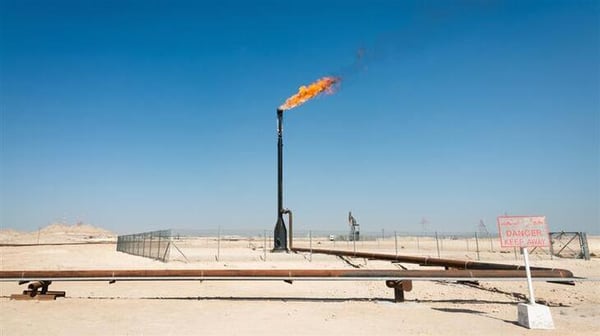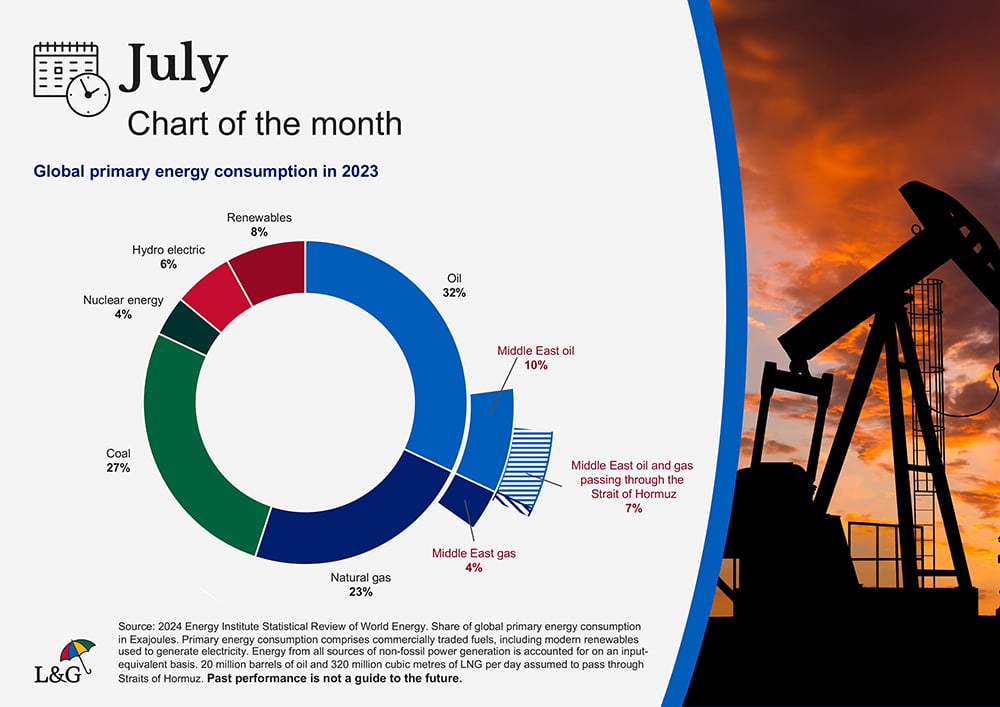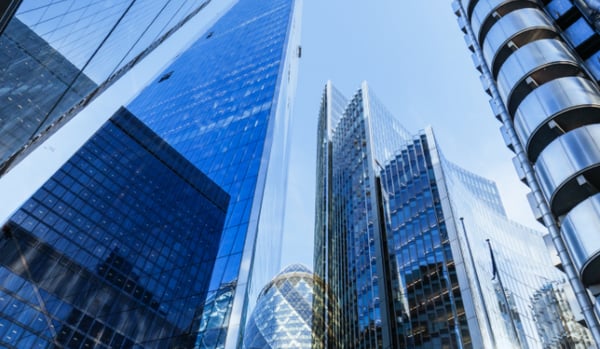Disclaimer: Views in this blog do not promote, and are not directly connected to any L&G product or service. Views are from a range of L&G investment professionals, may be specific to an author’s particular investment region or desk, and do not necessarily reflect the views of L&G. For investment professionals only.
How important is the Strait of Hormuz for global trade?
Given the fragility of peace in the Middle East, how reliant is the global economy on this 21-mile-wide stretch of water?

The Strait of Hormuz separates Iran (in the North) from the Omani Musandam Peninsula (in the South). Roughly 20 million barrels of oil and 320 million cubic metres of gas pass through it every day.[1] That’s 20% of global oil demand and 3% of global gas demand.[2]
Our chart of the month puts this in a broader context.
Roughly two-thirds of oil produced in the Middle East flows through the Strait, alongside one-sixth of the region’s gas (most gas produced in the region services the domestic rather than export market).
When taking account of all primary energy sources (hydrocarbons, nuclear, hydropower and renewables), 7% of the world’s energy needs are dependent on the Strait.[3] In principle, the world can substitute between different primary energy sources in the long run. But that would be a long and painful adjustment, especially given the structural imperative to substitute away from thermal coal, which still accounts for a quarter of the global energy mix.[4]
Although overall dependence on the Strait for gas transport is limited, the impact on traded gas is quite material. Around 20% of global LNG passes through the Strait with zero alternative route to market. LNG will set European/Asian market prices, and with European storage currently 56% versus 74% at same time last year, and the supply side unable to replace lost volumes, the impact on global gas prices in event of closure could be significant.

It would undoubtedly be damaging for the world economy if the waterway were closed to traffic for an extended period. However, we think comparisons with the 1970s – when an oil embargo was put in place – are misplaced for two reasons.
First, in the 1973 oil embargo, all members of the Organization of Arab Petroleum Exporting Countries (OAPEC) worked together to shut off exports for six months. Between them, they controlled one-third of global oil production. Today, the most important producers in the region (Saudi Arabia, Qatar, the United Arab Emirates) have an interest in keeping the hydrocarbons flowing.
Second, the world was then more dependent on oil, which accounted for 50% of global primary energy inputs. Oil subject to embargo was therefore meeting 20% of global primary energy needs.
An additional point to consider is that the Saudi East-West Pipeline and UAE’s ADCOP could be used to transport crude to maritime ports without having to pass through the Strait. For Saudi, this would mean repurposing a significant volume of LPG capacity to crude oil, which it has done in the past.
Global financial markets have, thus far, largely shrugged off the turmoil in the Middle East. That will almost certainly be tested the current ceasefire fails and Iran carries through on its threat to close the Strait of Hormuz to oil and gas exports. But we can take a modicum of comfort from the fact that, relative to the 1970s, the world is less reliant on oil and gas from the Middle East.
[1] Source: 2024 Energy Institute Statistical Review of World Energy.
[2] ibid.
[3] ibid.
[4] ibid.
Recommended content for you
Learn more about our business
We are one of the world's largest asset managers, with capabilities across asset classes to meet our clients' objectives and a longstanding commitment to responsible investing.

